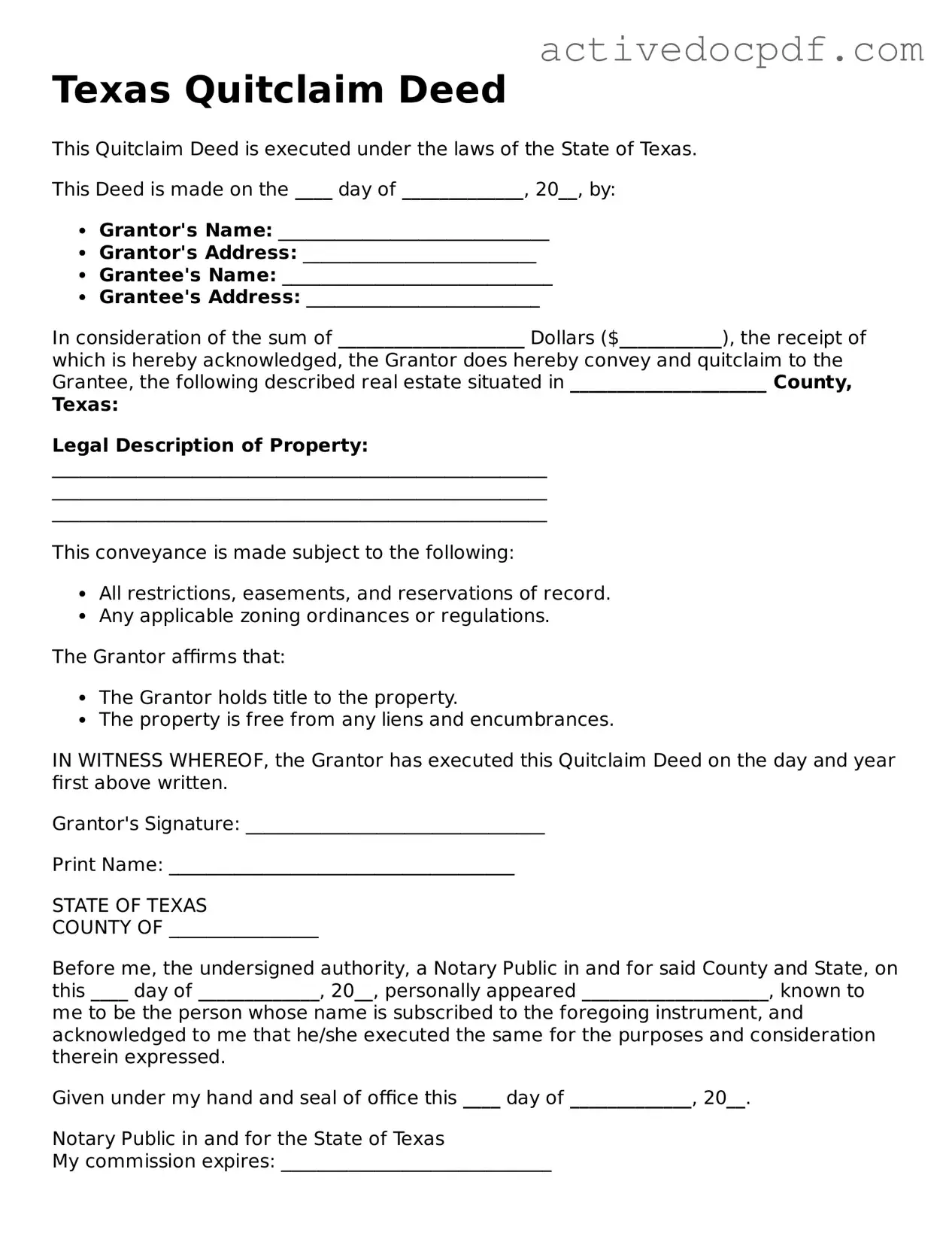What is a Texas Quitclaim Deed?
A Texas Quitclaim Deed is a legal document used to transfer ownership of real estate from one person to another without guaranteeing that the title is clear. This means the person transferring the property (the grantor) does not make any promises about the property's title or any claims against it. The new owner (the grantee) receives whatever interest the grantor has, if any, but assumes the risk regarding the property's title.
When should I use a Quitclaim Deed in Texas?
Quitclaim Deeds are commonly used in specific situations, including:
-
Transferring property between family members, such as during a divorce or inheritance.
-
Clearing up title issues, such as when a property owner’s name is misspelled on the title.
-
Transferring property into or out of a trust.
-
When the parties know each other well and trust that the transfer is valid.
However, it is important to note that a Quitclaim Deed does not provide the same level of protection as a Warranty Deed, which guarantees that the title is clear.
How do I fill out a Texas Quitclaim Deed?
Filling out a Quitclaim Deed involves several key steps:
-
Identify the parties involved: Clearly list the names and addresses of both the grantor and the grantee.
-
Describe the property: Provide a detailed legal description of the property being transferred, including the address and any relevant lot or block numbers.
-
Include the consideration: State the amount paid for the property, or indicate if it is a gift.
-
Sign the document: The grantor must sign the deed in front of a notary public.
-
Record the deed: File the completed Quitclaim Deed with the county clerk's office in the county where the property is located.
Is a Quitclaim Deed the same as a Warranty Deed?
No, a Quitclaim Deed is not the same as a Warranty Deed. The primary difference lies in the guarantees provided. A Warranty Deed assures the grantee that the grantor holds a clear title to the property and has the right to transfer it. In contrast, a Quitclaim Deed transfers whatever interest the grantor has without any guarantees. Therefore, it is essential for the grantee to conduct their due diligence regarding the title before accepting a Quitclaim Deed.
Can I revoke a Quitclaim Deed in Texas?
Once a Quitclaim Deed is executed and recorded, it generally cannot be revoked. The transfer of property is considered final. However, if the grantor wishes to regain ownership, they may need to execute a new deed transferring the property back to themselves or to another party. Legal advice is recommended in such cases to ensure compliance with Texas laws and to understand the implications of the transfer.
